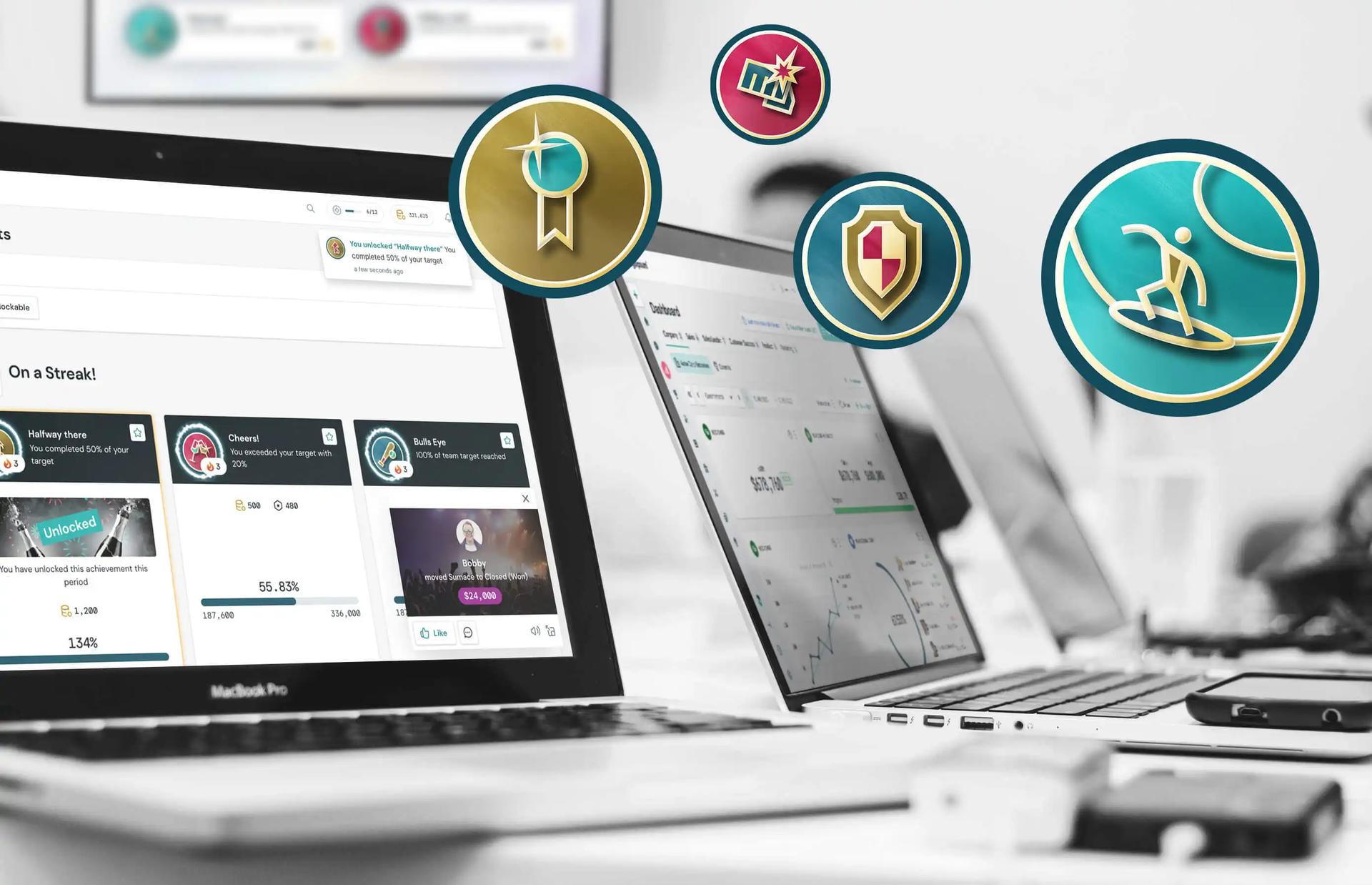
Gamification for the win
Boost performance with the only gamification solution designed to motivate every player on your team to goal. Engaging competitions, customizable dashboards, and real-life rewards tap into the motivational drivers guaranteed to boost productivity and performance.

Just press play
Choose from more than a dozen pre-built competition formats—one-day blitzes, bracket-style tournaments, lotteries, and more—then launch them in minutes.
Boost performance and engagement with Multi-Round, a multi-stage sales competition that drives key metrics like calls, meetings, and deals. Each round increases in difficulty, pushing your team to excel. With the Lifeline feature, players get a second chance to stay in the game—keeping competition fierce, motivation high, and results strong!
Stoke healthy rivalry
Harness your players’ competitive nature by putting them in head-to-head matchups where coins, social clout, and bragging rights are on the line.
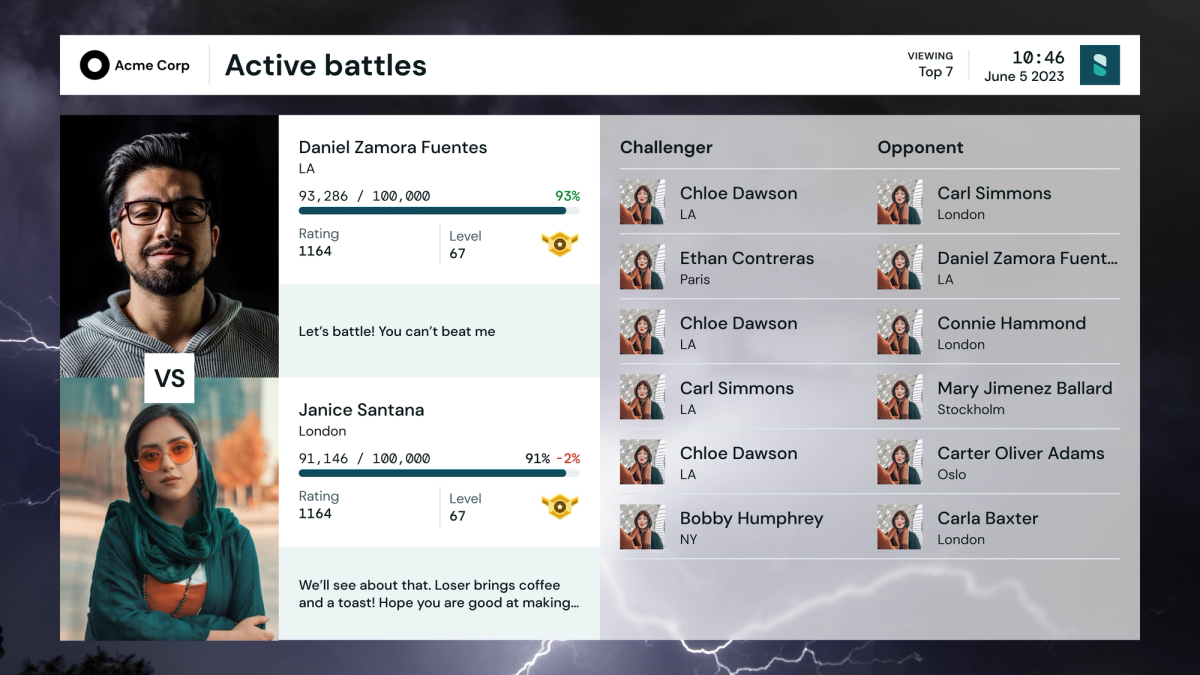
Award badges of honor
Build their skills and their self-esteem with custom badges that reward mastery, milestones, and other key achievements. Encourage consistency—a must for any sales team—to earn streaks.
Real-life awards they’ll love
Turn cha-ching to bling by awarding digital coins they can collect and redeem for real-world rewards in our customizable rewards shop. Trust us, your team is much more incentivized when rewards they actually care about are at stake.
Build team spirit
Managers and players can publicly thank colleagues for their help and hard work with shout outs and “endorsements,” social rewards that keep the good vibes going. From managers to colleagues, these shout outs are some of the best ways to recognize great work done on a daily basis.
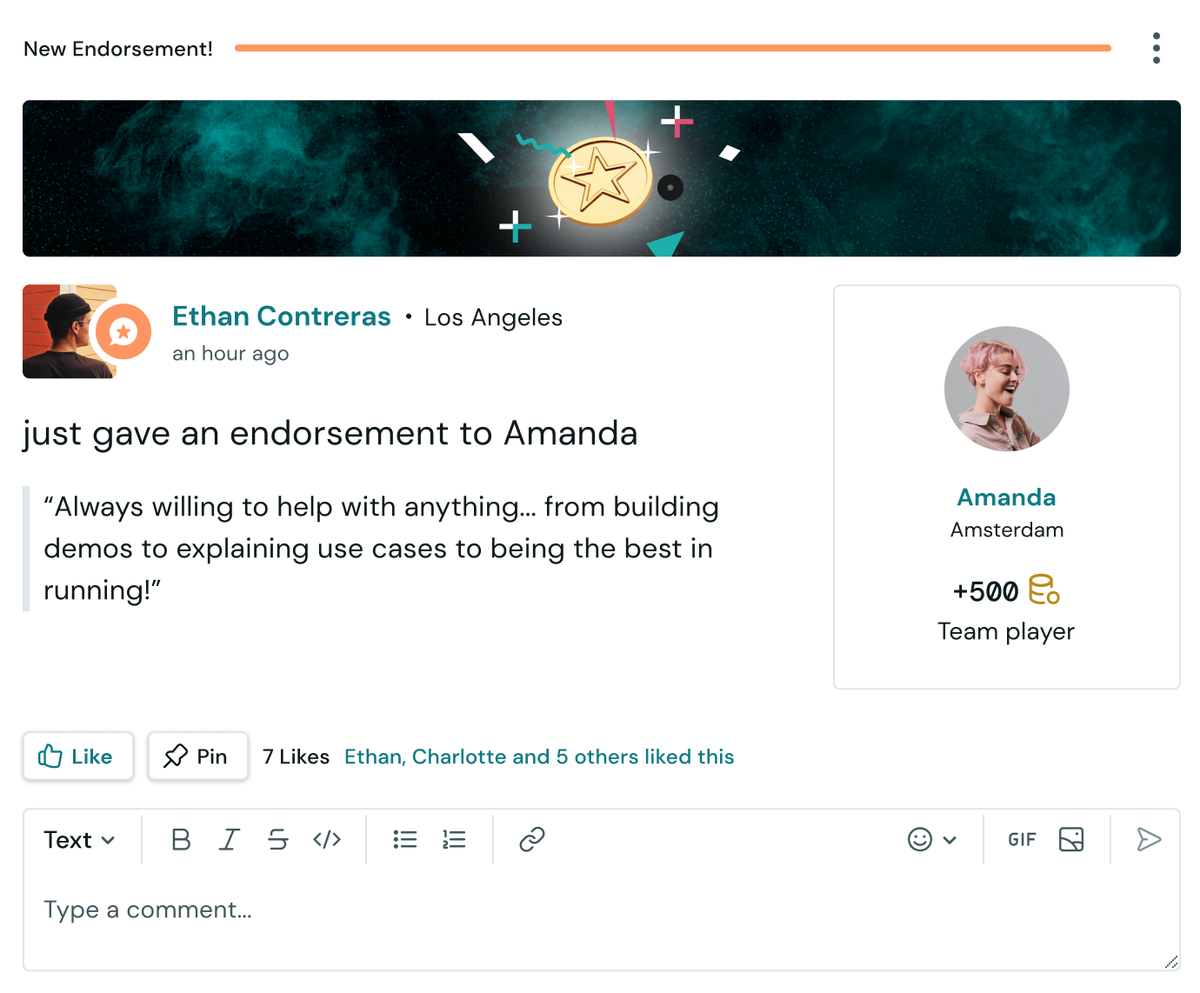
Celebrate with video
Punctuate wins with YouTube video clips you can assign to tasks accomplished, milestones hit, deals closed, and more. These YouTube clips let your team put a personal touch on those wins and let them bring some more fun to the daily grind.
Game on, everywhere
Keep their heads in the game wherever they are with SalesSurround, our multiscreen motivational megaphone that celebrates wins on in-office screens, work from home laptops, and mobile devices. SalesSurround keeps your team in the game regardless of whether they are in the office, in the field, or in their backyard.
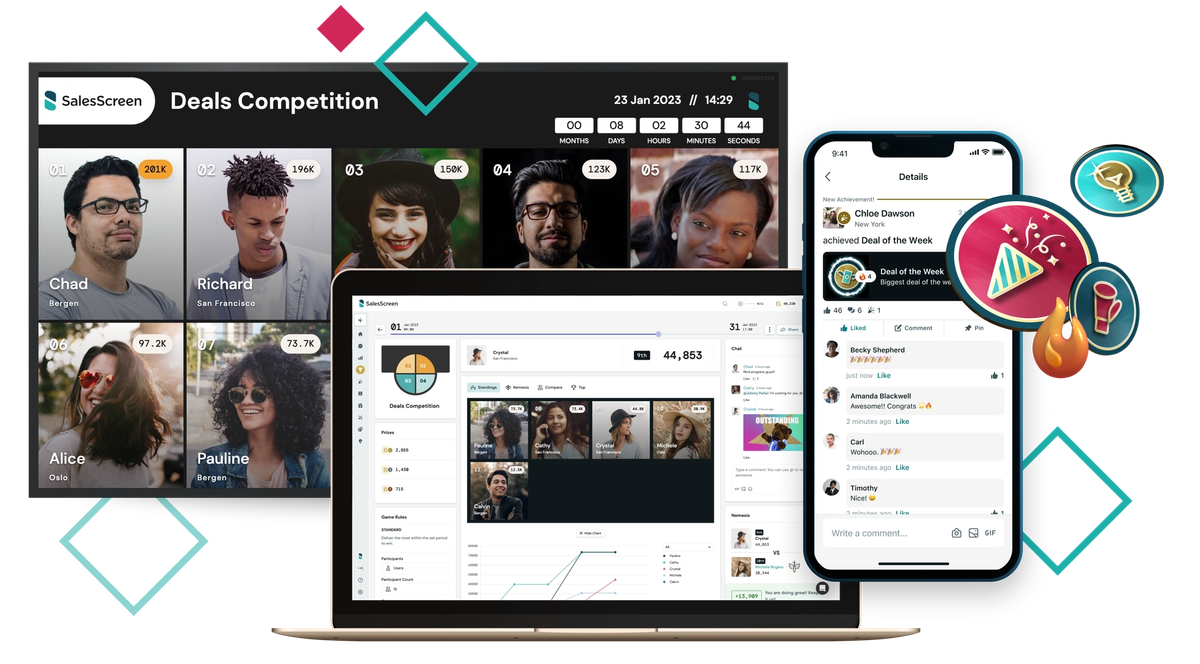
Gamification Works For Everyone
The best part about gamification is that it actively incentivizes and engages everyone across your entire team. From your newest hire to your most seasoned rep, gamification generates more sales.

Achievers
Badges that are difficult to earn are the perfect carrot for players who aim to be exceptional.
Key Drivers
Gold stars
Explorers
Another box of golf balls? Yawn. Signed copy of The Challenger Sale? Yes!
Key Drivers
Novel prizes
Socialites
Reward collaboration with “team player” awards for positive social behavior.
Key Drivers
Service badges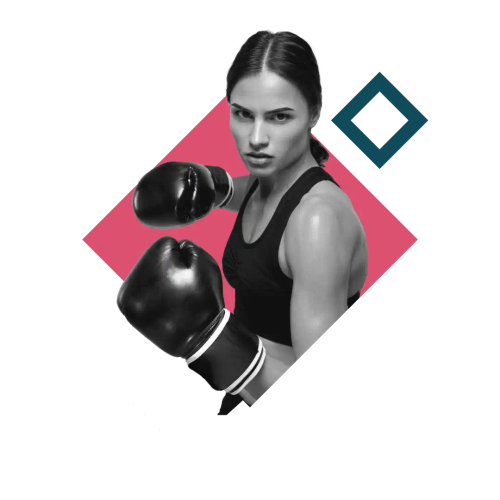
Killers
Let these champs prove who’s best in head-to-head contests with their chief rivals.
Key Drivers
Battle ratingG2 Reviews
See how gamification works in the real world
We can talk your ear off about gamification, but the real proof is in the pudding. Hear what our clients have to say about how gamification has made a massive difference in their productivity, their win rates, and their retention rates.
Let’s Get Your Team In The Game
We want to know how your team works! What struggles are you hitting, what are your biggest strengths, and what are your goals?




